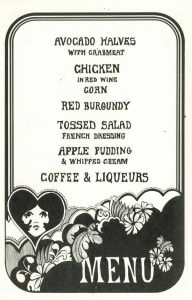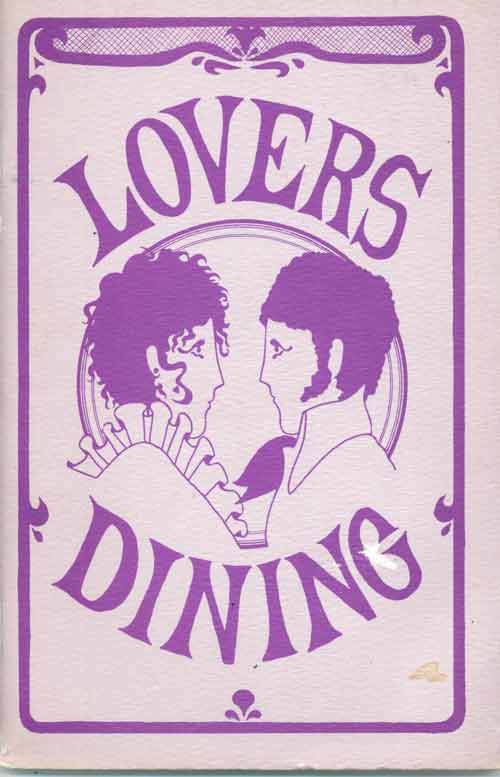Here’s something you may not know about cooking — when it first started, the comic strip Cathy was really pretty good.
Cathy Guisewite’s eponymous strip premiered in 1976, delving immediately into its constant themes of guilt and insecurity, themes that were very much on the mind of a nation that was still reeling from the shared nightmares of Vietnam and Watergate.
Visualy, the Cathy of 1976 was very different than the strip it would become. Guisewite’s early strips are composed in a rough, sketchy style with thin, expressive line work. Her characters faces change shape dramatically between panels, reforming with their moods and carrying the strip close to abstract expressionism. The characters are drawn as projections of their personalities. Irving is a beefy chin taking up the space of an entire human. Andrea is a slithery energy of ideas, always dominating Cathy in the frame. And Cathy — Cathy even has breasts. She even has more than one outfit. In 1976, Cathy even has a sex life.

Which brings me to Lovers Dining, a 1970 pamphlet-sized guide to cooking for two written by the woman who was then Irena Kirshman. If you don’t know her as Irena Kirshman, you may know her as Irena Chalmers, James Beard Foundation award winner and teacher at the Culinary Institute of America. But in 1970, she was living in Greensboro, NC and running La Bonne Femme, one of the state’s first gourmet food and wine stores. Chalmers herself began Potpourri Press, the imprint of Lovers Cooking, and she and the company were genuine innovators in the realm of the single-topic cookbook.
Lovers Dining is a gorgeous little book. Filled with solid, elegant recipes and decorated with Bob Penny’s ever-so-slightly groovy black and white illustrations, it’s one of those comforting little books that’s a pleasure to hold and to flip through. It lets you steep in pleasant memories of amber linoleum, avocado refrigerators, and black and white Walter Cronkite. It’s the kind of cookbook that the sketchy, expressionistic Cathy of 1976 might have prepared a meal out of, particularly on a night when she was planning to have sex. With Irving. Or possibly Emmerson.
In 1976, Cathy could do that, because Cathy was an adult. She was anxious, slightly neurotic, but dealing with the endless stream of constant annoyances and baffling randomness that constitutes a normal adult life. It’s a view of adulthood from a time when not everyone was quite sure what they were looking at. But there are ways to cope with that. Humor is one. Cooking is another.
In the introduction to Lovers Dining, Chalmers writes:
It is always tempting to buy rather too much for two. Many supermarkets have made the decision that 4.35 people constitutes the ideal family, and pack their meats and produce accordingly. Some of us cower before national averages and continually cook for two or four absent guests and freeze the surplus food supplies. But what a bore that is! Mysterious plastic containers proliferate and refuse to be devoured by the freezer. They glare icily back when their contents are examined. Defrost the remains of a dinner so memorable a month ago, and what happens? Ignoring the twinges of your conscience, you throw it out and start again anyway!
Condense this into four panels and put it on some bristol board, and you would have a perfect Cathy gag. You could also do as Irene Chalmers suggests, and just cook for just two.

The cultural space that Lovers Dining and the early days of Cathy came from was one that understood that adulthood was a complex, confusing thing. This was the moment of Annie Hall, of Network, and hell, let’s even throw Rhoda in there. It was the time of a culture and a generation that was young, independent, and seriously trying to figure out what that meant.
Yes, it could and did easily devolve into untrammeled narcissism — est was no great favor to the American cultural mindscape, and the self-indulgent plague of jogging that began in the Seventies has only worsened and developed into a full-blown rash of marathons. But the original instinct to explore your place in the world and the problems that came with being an independent adult that motivated these movements was a sound one. And, in a time before talk therapy had fallen out of favor, the way to explore problems was to engage with them, and to have a conversation. And a conversation is also something that is perfectly prepared for just two.
My favorite recipe in Lovers Cooking is this simple one for Avocado Halves with Crabmeat:

In a time when Americans eat 53 million pounds of avocados on a single day, it might be difficult to remember that in 1970 the avocado was still something of an exotic fruit. Even canned crab meat would have been special. Good, fresh crab meat is still hard to find in most of America, and in the Greensboro in the early 1970s where Lovers Dining was written, it would have been nearly impossible. This is a simple recipe, easy to prepare, but one which has enough exoticism and sophistication that in the early 1970s it would have been a wonderful way to start a conversation with someone about who you were and what you wanted out of life. And if, at the end of that conversation, you found yourselves in bed together well, we’re all adults here.
Cathy’s sex life ended not too long after the strip’s premiere, whether from syndicate pressure or from Guisewite’s own gentler expressions of her ideas. Guisewite’s linework became more polished as she developed a more professional style, but something of the early energy of the strip faded with this change. Cathy’s breasts disappeared and she began to only wear the one outfit, the sweater marked with the slightly irritating heart design. The appearance of the other characters in the strip calmed down as well, and eventually everyone in the panels of Cathy came to resemble an overgrown toddler. Cathy, the strip, and its humor all became ever so slightly infantilized.
Irena Chalmer’s latest book is called Jobs for Cooks. It’s a perfectly helpful and intelligent resource for someone looking to make a career in food. It’s also a lot les exciting than Lovers Dining.
What happened between then and now? How did we go from Cathy as a sexual being serving exotic avocados on a plate, to Cathy as an object of ridicule and the cornucopia of fine foods available everywhere serving up avocados for everyone but making cooking just another corporate job? What happened to adulthood?
 Lovers Dining was a book about the simple pleasures of adulthood, while Cathy was a comic strip about its simple anxieties. Both of these voices have faded from the conversation in American life as, over the past thirty years, we’ve become more competitive, more aggressive, and less willing to listen to each other. The all-pervasive commercialization of American life, the mindset that teaches us that everything has to have a goal, has moved us from splurging on an avocado to wirelessly downloading 69 Best Foods to Ignite Your Love Life. Expediency has trumped romance. If you know you’re going to go there anywhere, you might as well get there faster.
Lovers Dining was a book about the simple pleasures of adulthood, while Cathy was a comic strip about its simple anxieties. Both of these voices have faded from the conversation in American life as, over the past thirty years, we’ve become more competitive, more aggressive, and less willing to listen to each other. The all-pervasive commercialization of American life, the mindset that teaches us that everything has to have a goal, has moved us from splurging on an avocado to wirelessly downloading 69 Best Foods to Ignite Your Love Life. Expediency has trumped romance. If you know you’re going to go there anywhere, you might as well get there faster.
Cooking is an act of conversation. Cooking is a conversation with ourselves, our tablemates, and with the wider world. And, as with any conversation, the most important part is the listening. The fears that Cathy had about being a young, single woman on her own — about having sexual relationships and sexual encounters as an adult, the confusion that comes from coping with a culture that tells you your chief value is as a consumer — these fears are just as real as when Cathy premiered in 1976, and as real as they were in 1970 when Lovers Dining gave us a way of dealing with them. The conversation with the wider world begins when we begin listening to one another. A cool, elegant avocado is a great way to start listening.
